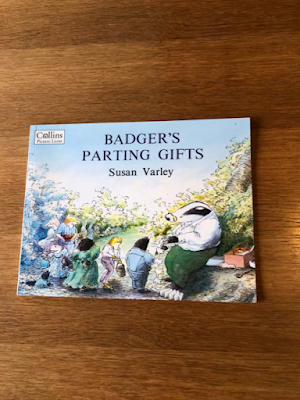Topics for children's picture books - death? by Sandra Horn
First of all, thank you so much Griselda Hamway, for gifting me this date when I'd failed to blog on 20th.
Our very much loved choir leader, Pauline, died recently. She’s had inoperable brain tumours. One afternoon soon after her diagnosis, I shared this poem with her.
CONSERVATION OF MATTER
I am closer, now, to my after
than I am to my before.
This lively mass of atoms
I now know as ‘me’,
was here at the beginning;
scattered after the Bang,
then gathering, dispersing, re-grouping
times out of mind, shapes out of imagining:
Slime-mould, starlight, dormouse, willow tree,
man, beast, parasite, building block,
blade of grass, hover fly, china clay,
drop in the ocean, grape-pip,
earthworm, raincloud, prickle, soot –
and when I break, dissolve,
when I am no longer me –
the atoms will re-form to be
slime-mould, starlight, dormouse, willow tree?
I wrote it to comfort myself and was so relieved and pleased that it comforted her too – and she asked me to read it at her funeral. It seemed to strike a chord with quite a few people. My first attempt at making sense of death for myself was writing Tattybogle, in which the tired and tattered old scarecrow is blown to pieces in an autumn gale, reduced to a stick which is dormant all winter, and is re-made in spring when the stick puts down roots and grows into a ‘beautiful golden tree’ (as dead-looking hazel and willow branches can).
The thing about it is that is exists on several levels – Ken Brown’s gorgeous illustrations include two mice who live with the scarecrow – one in his hat, the other in his pocket. With very small children, the story can be about finding the mice on every page and following their story. Older children enjoy the ‘blown all to pieces’ part, especially his head flying through the air! Even older children, or adults, understand that it is about death and rebirth, or even resurrection, as one vicar insisted, and it has been used in hospices and in explaining death of a loved one to children. In a way, it’s in the tradition of Badger’s Parting Gifts by Susan Varley but it differs in that it is a more oblique take on the topic. It can be a very simple story about mice, a story about the seasons, or an approach to the topic of death.
Children’s authors often tackle difficult topics by using animals as people-substitutes – as in Badger’s Parting Gifts.
There’s another rather old story, When the Porcupine Moved In by Cora Annett, in which a rabbit’s life is turned upside-down by an unwelcome, grumpy, demanding guest. It’s fun. I’ve also used it to teach about chronic pain; it’s such a brilliant analogy!
Shadowhog is about being afraid (as I was as a child) of creepy shadows, or it’s just about little hedgehogs.
I’m not even sure I’m entitled to comment/trumpet blow like this any more, as it’s a good long while since my last picture book came out, but here it is. Maybe I’ll shut up now…





Comments
And you hit the nail on the head in your second to last paragraph. Its fascinating how we've gone back 150 years to the solemn puritanical mode of writing for children in the Victorian era, with stories blazing How To Be Good with great righteousness rather than subtle imagination. What child wants to read a story telling him/her to Be Kind? You might as well give them Mrs Do As You Want To Be Done By from the Water Babies and be done with it. Whereas Goose Anna gives the same message but revealed through the story, not trumpeted in words. Whatever happened to Show, don't Tell?
Delighted for you to post today, by the way. Tomorrow is my scheduled day.